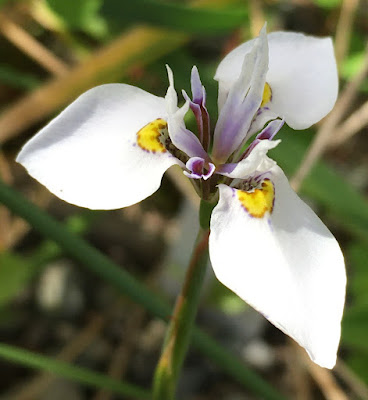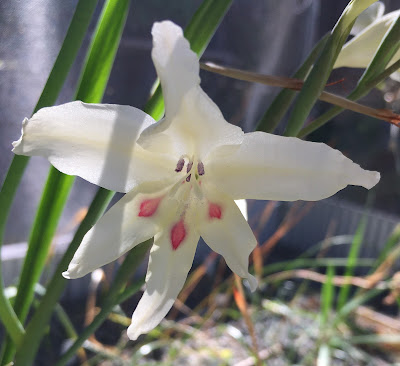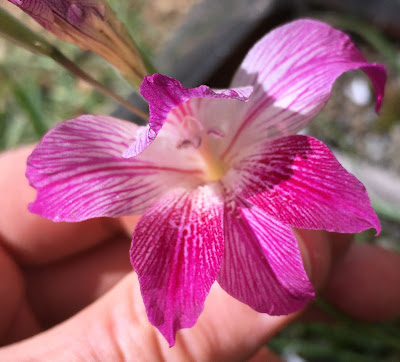Pollen parent: MM 12-122b (villosa a X tulbaghensis)
This is a very deep purple seed parent crossed with a pinky-orange flower that had purple and orange parents. So the plant below has three purple grandparents and one orange grandparent. But as often happens with Moraeas, the orange dominated.


















































